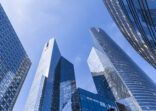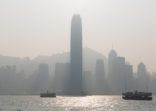Investors in the mainland have continued to pour money into Hong Kong-domiciled funds (northbound) that are sold via the Hong Kong-China Mutual Recognition of Funds (MRF) programme.
For the month of July, net inflows for northbound products reached RMB 2.45bn ($340m) – the highest monthly figure since 2017, according to latest data from China’s State Administration for Foreign Exchange (SAFE). The record monthly net inflow was RMB 3.9bn in August 2016.
This is the sixth consecutive month that northbound funds saw net inflows, bringing year-to-date net inflows to around RMB 6.4bn ($900m).
“Generally, we’ve seen an increase in outbound investments from Chinese investors due to rising concerns about the US-China trade war, slowing domestic economy and hence a growing need for diversification,” said Yoon Ng, director for Asia-Pacific insights at Broadridge Financial.
Northbound fund flows
|
Net inflows / (outflows) |
|
| December 2017 – January 2019 (14 consecutive months of net outflows) |
(RMB 4.73bn) |
| February 2019 |
RMB 75.5m |
| March 2019 |
RMB 1.34bn |
| April 2019 |
RMB 976.3m |
| May 2019 |
RMB 969.7m |
| June 2019 |
RMB 1.45bn |
| July 2019 |
RMB 2.45bn |
| YTD total net inflows |
RMB 6.37bn |
| Net inflows since the programme started |
RMB 15.45bn |
Source: SAFE
Since the programme began in 2015 to the end of July this year, cumulative net inflows were a record high of RMB 15.4bn, breaking the previous month’s record.
The inflows come after mainland investors withdrew money from northbound funds for 14 consecutive months. For the full year 2018, net outflows totalled RMB 3.4bn.
Bond fund popularity
Among the northbound funds sold to mainland investors, fixed income products have become the clear winners, according to Barbara Ferraresi, Broadridge’s director of global distribution solutions.
Without naming any MRF product, Ferraresi said that Asian hard currency and global currency bonds saw huge inflows. Mainland investors were likely reacting to the plunging value of the RMB and sought a currency hedge for their investments.
“It also looks like some of the successful funds carry an absolute return flavour that can boost returns through the use of derivatives or other riskier instruments, but at the same time, hold substantial amounts in cash too,” she said.
In total, there are 14 northbound funds under the MRF scheme and 16 more products that are still waiting to be approved, according to data from the China Securities Regulatory Commission (CSRC).
QDII bond funds
Similarly, global bond funds sold under the qualified domestic institutional investor (QDII) scheme, which also offer mainland investors offshore exposure, had the highest net inflows of RMB 3.5bn among all QDII categories during the first half this year, according to latest data from Morningstar Direct.
The QDII scheme allows domestic fund managers to raise onshore money for offshore investments, within allocated quotas.
QDII net inflows / (outflows)
| Name |
YTD |
| QDII Global Bond |
RMB 3.5bn |
| QDII Sector Equity |
RMB 1.11bn |
| QDII Other |
RMB 588m |
| QDII Commodities |
RMB 12m |
| QDII Emerging Markets Equity |
(RMB 15m) |
| QDII Emerging Markets Allocation |
(RMB 22m) |
| QDII Asia-Pacific ex-Japan Equity |
(RMB 72m) |
| QDII Asia Allocation |
(RMB 194m) |
| QDII Global Equity |
(RMB 425m) |
| QDII Global Allocation |
(RMB 487m) |
| QDII Greater China Allocation |
(RMB 555m) |
| QDII US Equity |
(RMB 920m) |
| QDII Greater China Equity |
(RMB 1.82bn) |
Source: Morningstar Direct
Following QDII global bond funds are sector equity products. Ferraresi noted that the bulk of the sector equity fund inflows came from the Fortune SG S&P Oil and Gas Exploration and Product Selection Fund, which had net inflows of $225m (RMB 1.6bn).
“Together with the China GF Dow Jones US Select Oil Exploration and Production Fund, which had flat net inflows of $1.6m, these were the only two funds that were in positive territory within this category,” she said, noting that her firm’s data may differ from Morningstar’s.
Overall, QDII funds had total net inflows of RMB 798m during the first half this year.
“I am not seeing yet a rebound into QDII funds, although outflows are shrinking at least for this year compared to those recorded in the previous two years,” Ferraresi added.
In 2018, QDII funds had net outflows of RMB 10.76bn, according to Morningstar data.
Southbound MRF muted
On the other hand, demand for southbound funds – China-domiciled funds sold in Hong Kong – remains muted, with net inflows of just RMB 2m in July, according to SAFE data.
Southbound fund flows
|
Net inflows / (outflows) |
|
| 2017 total inflows |
RMB 239.83m |
| 2018 total inflows |
RMB 96.55m |
| January 2019 |
(RMB 3.47m) |
| February 2019 |
RMB 6.01m |
| March 2019 |
RMB 12.14m |
| April 2019 |
(RMB 79m) |
| May 2019 |
(RMB 39m) |
| June 2019 |
(RMB 28m) |
| July 2019 |
RMB 2m |
| YTD outflows |
(RMB 130.6m) |
Source: SAFE
Since the MRF scheme started in 2015, net inflows for southbound products totalled RMB 302m, which is small compared to the much stronger northbound inflows of RMB 15.4bn.
“Southbound sales will likely remain muted as Hong Kong investors have lots of existing options to have a China play without going through the MRF route,” Ng said.
The Securities and Futures Commission has approved around 50 China-domiciled funds to be sold in Hong Kong. However, only two dozen funds have been made available for sale to investors.

















